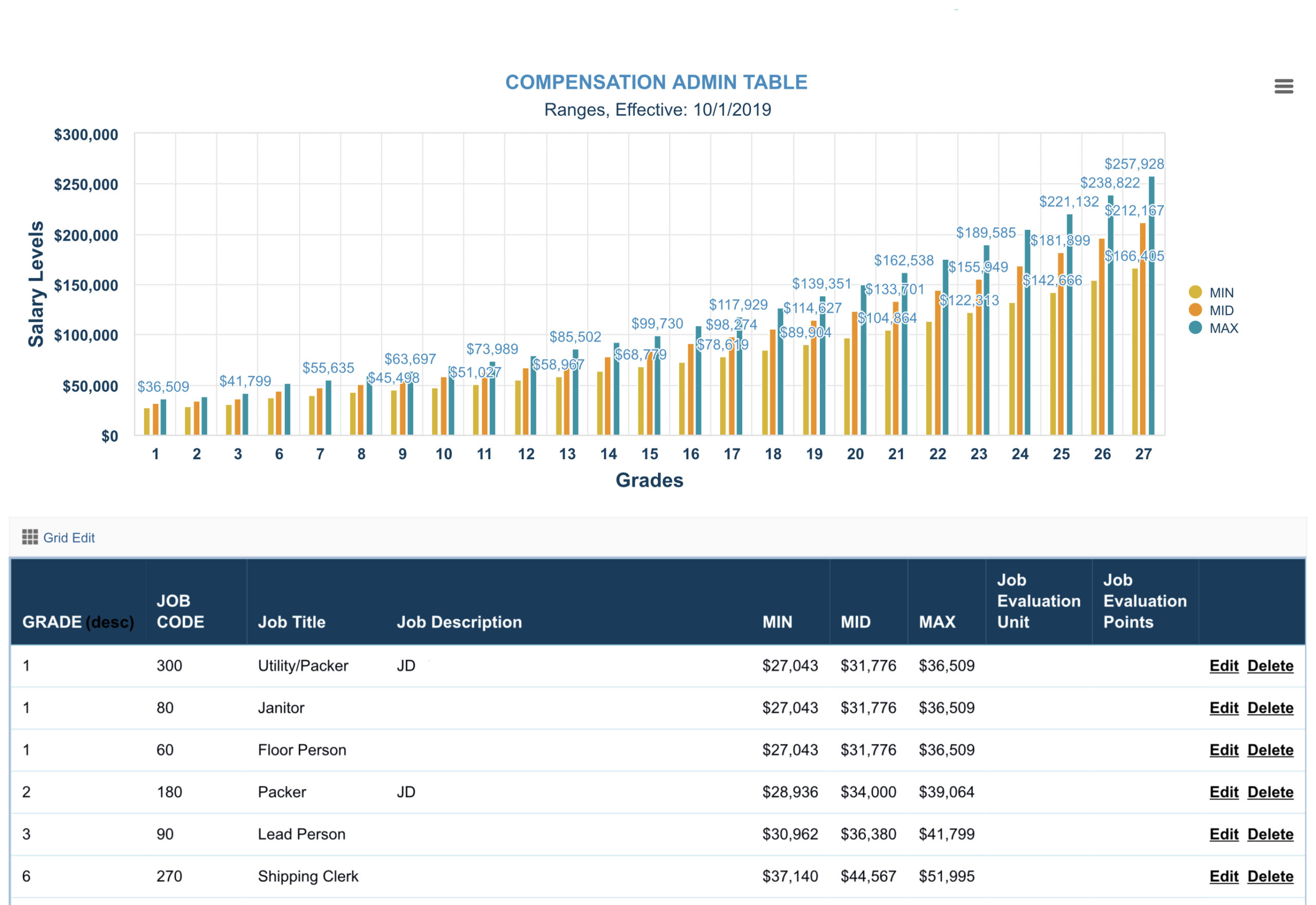High-Impact Compensation Strategies to Include in your 2022 Plan
High-Impact Compensation Strategies for 2022
Is 2022 the best year to reset your compensation program? Absolutely.
To prepare you for this year, Blue Whale Compensation has compiled a series of measures that can help companies best manage their labor and talent needs.
We are living through a historical shift in the workplace with rising wages and inflation. At no other time in recent history has compensation taken a front seat as a means that companies can use to retain, engage, and attract new talent. A compensation strategy, however, should not be confused with solely giving employees aggressive increases. In fact, unwarranted increases with no other plan are likely to make issues worse.
The plan needs to be based on a comprehensive analysis of budgets, labor needs, current talent needs, future talent needs, and basic compensation planning.
A Market Analysis is a Must
Carefully examine market levels and set appropriate salary benchmarks. Based on that information, consider market adjustments. Market adjustments should generally be no higher than 2%. If more severe market adjustments are needed, consider another round of market adjustment increases in 12 months. When setting the market, consider that 2022 is not the year to be noncompetitive. Along with inflation eating away any substantial wage gains, recent surveys indicate that most employers a setting salary increases about their 2022 projections; in addition, about half of companies are actively implementing market adjustments to employees who are under competitive market pay.
Merit-Base and Market-Driven Increases based on Performance

If you have ranges and midpoints, combine your performance management information with an employee’s market position. By using a merit-driven grid, you can justify larger, above-average increases to high-performing, underpaid employees. Conversely, the matrix helps you develop a policy to slow down salaries that are way above market midpoints.
Identify Employee at Risks
Mine your employee data and identify the employee population that is most at risk of leaving your company. Use your compa-ratios! Employees with the lowest compa-ratios are twice as likely to be looking for employment. Review your employee population via existing interview data: what departments, units, or types of employees are leaving at a faster pace and what trends can you derive from their exit interviews?
Closely examine your labor stats and compare them to specific benchmarks. For example, voluntary turnover rates are trending between 10% and 17%. Are your higher or lower? Employee tenure is another key barometer to measure at-risk groups. Employees who have more than four years with a company as twice as likely to stay with the company for another three to four years. Employees who have less than two years are twice as likely to be looking for another job. In addition to critical stats, check data from your employee opinion or engagement surveys. They often contain valuable information that can help you identify at-risk employee populations.
Implement a Basic Compensation Plan with Guidelines, Grades, and Ranges
The rapid movement in wages that are likely to be experienced in 2022 most likely will subside in 2023. It is, therefore, very important that beyond immediate increases, you carefully look ahead and implement basic compensation management guidelines. This includes grades based on job leveling; ranges reflecting reasonable hiring salaries; policies addressing promotions, demotions; and most importantly, a basic outline of your company’s compensation philosophy.
Upgrade Your Performance Management System
Over the last few years, AI-driven solutions have come into the marketplace with innovative technologies that have simplified the often complex and disliked world of performance management tools. Many tools exist to offset the great challenges companies have with their existing program. Most app-based solutions tend to be affordable, flexible, and easy to deploy.
Recalibrate Your Pension Vesting Provisions and Enhanced Your Time-Off Policies
As employee tenure decreases, employers may want to re-think the existing model of pension benefits vs. time-off benefits. For example, most employers allow an employee to join their 401k plan in less than six months. Less than 30% wait a full year to allow them to join. If your retention and data show a pattern of employees decreasing tenure, then, employers may want to extend the waiting time before an employee signs and increase the vesting from three to five years. This needs careful consideration as 401K is a premium recruiting vehicle and care should be exercised to dilute the recruiting value that your current company offers. However, for companies that shift pension costs, to additional flexible some of the cost to enhanced time-off policies.
Consider Bonus for High Paid Employees, Not Increases
For high-paying employees versus additional salary, examine the market, and follow the following strategic budget: For employees over the midpoint, offer them a one-time bonus; for employees under the midpoint, add to their base. Over time, this strategy will keep your costs even with the market and you can target at-risk employees, and perhaps even keep them.
Selling your Plan
The biggest challenge in resetting your compensation program should not be illustrating the company can be more productive, efficient, and ahead of the curb in the long run. The biggest challenge is bringing the organization the information they need – from your C level to your middle management, and all the way to employees. This requires a significant public relations effort – one that cultivates the needs of the organization not only for the immediate future but for long-term success.
Is Job Hopping Here to Stay?

It used to be that most employees would stay in a position on average of four to six years. That is no longer the case. The fact is that most employees are no longer considering long-term employment with your company.
The leaders of the job-hopping movement are, to no surprise, millennials. They are now aptly called the “job-hopping generation” because they display a significantly higher willingness to switch careers than previous generations. The long-tenured career employee is essentially over.
Employee mobility with employment options, and the opportunity to get more money with the next move, have resulted in decreasing employee tenure. Social media is saturated with narratives about getting a 20% increase by going to a new company. The fact is that strategy works for people. In previous years, job jumping was frowned on – now, that tactic is part of the challenges that employers must seriously account for.
Given that employees are less likely to stay with your company for a long period, you need to develop shorter and more impactful training procedures to make up for time lost in the hiring process. Shorter employment also makes companies question their pension and retirement benefits. Instead of benefit and tenure keeping in immediately waiting 6 to 12 months longer and increasing vesting provisions from 3 to five years.
Hire Part-Time Employees to Fill the Labor Gap
One driver of the current resignation wave is that employees are looking to shift their work schedule and work with more flexible work type arrangements. Often, even a full-time WFH arrangement is not enough. Employees are also looking for a shorter, flexible work schedule. Part-time employment may be an option for them and many employers.
Beyond the cost economics – which may help the employer – part-time employees often have the experience and the technical agility that employers often require from new employees. Given the new dynamics in work arrangements, part-time employees, when properly structured, can add the stability that the current environment lacks. Managers will be key. Managers can resist the perception that part-time employees are supplemental and not worthy of long-term investment in terms of training to development. HR must bring considerable company culture efforts to show how part-time employees can be more than a short-term for the organization. Employees now place a high value on the ability to control their work/life balance, so they are likely to appreciate the opportunity to earn income while being able to accommodate to their lifestyle.
High Demand for Interns Expected in 2022
Intern season is coming up! A well-managed internship program is a great way to identify potential long-term talent against the wave of resignations. If you have been on the fence about hiring interns, this may be the year for you to jump into developing an internship program. A properly vetted internship program offers a variety of solutions that can quickly fill the labor gaps most employers are experiencing.
Hiring interns is a great way to get specific skill-based labor that can support critical key functions and relieve areas with entry-level support. A good program should also be able to help you identify potential long-term talent. If you target and recruit specific skill sets, you may be able to bring some support to key projects that might be stuck due to a lack of resources.
Most of the jobs that are being lost, besides retail and health, are office administrative classifications where minimum wages have not kept up with inflation. That means interns and part-time employees could provide much-needed relief during the late spring and summer months.
February, 2022





